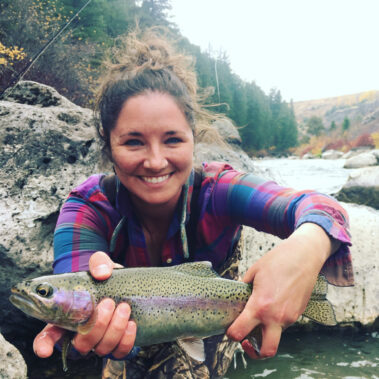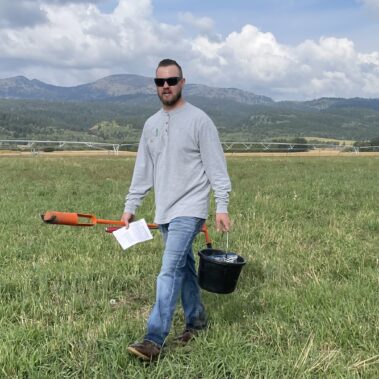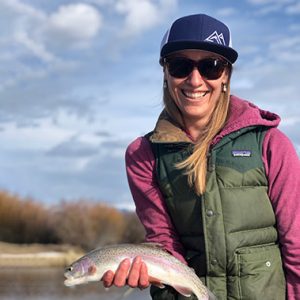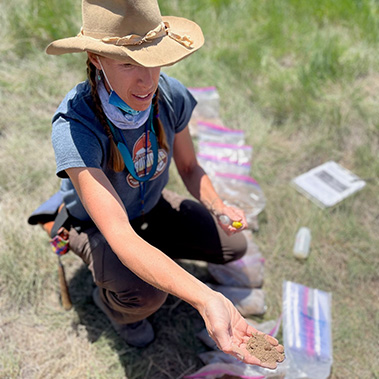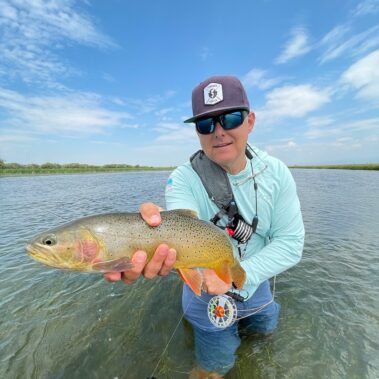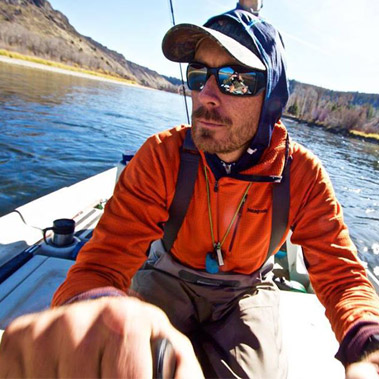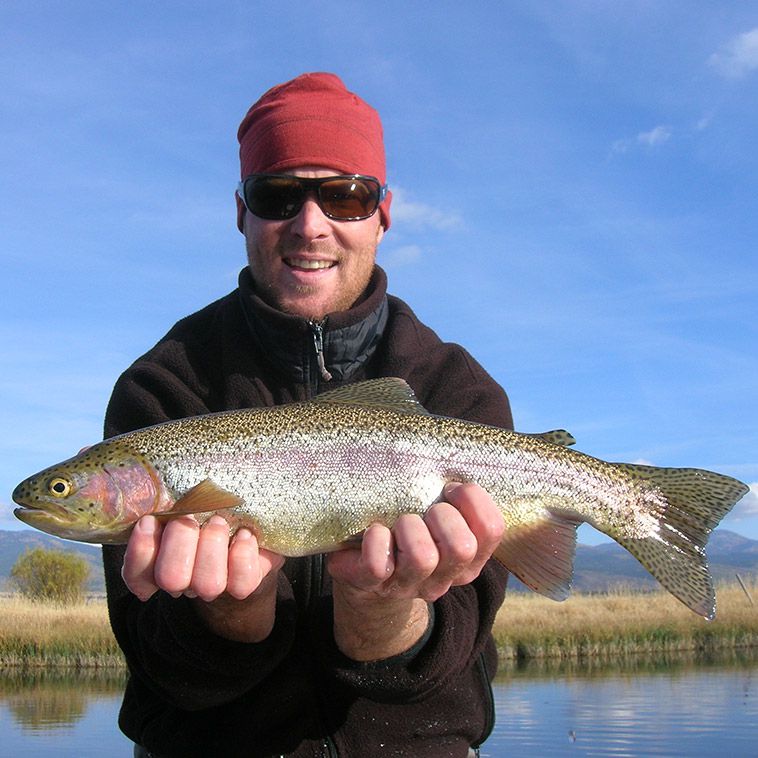Leading the Field in Fisheries Conservation

Teton Creek Farm; 105 Acres for Sale in Driggs
June 6, 2019
Sharing the Load: Working together to reduce Teton Creek flood risk
October 22, 2019Leading the Field in Fisheries Conservation
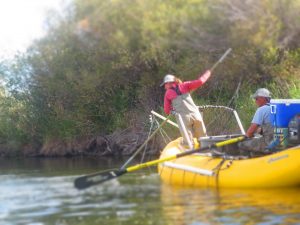 In 2001, with deep concerns for dwindling trout populations and perceived declines in water quality, a group of ranchers, fishermen, and scientists formed Friends of the Teton River. FTR was designed to be a science-based, watershed-centric NGO with a mandate to recover fish populations by improving the health of the Teton River Watershed. At the time, very little data had been collected specifically about native cutthroat, their habitat, and watershed conditions impacting the fishery.
In 2001, with deep concerns for dwindling trout populations and perceived declines in water quality, a group of ranchers, fishermen, and scientists formed Friends of the Teton River. FTR was designed to be a science-based, watershed-centric NGO with a mandate to recover fish populations by improving the health of the Teton River Watershed. At the time, very little data had been collected specifically about native cutthroat, their habitat, and watershed conditions impacting the fishery.
Today, FTR leads the field in western native trout science and research. Aided by agency partners, and some of the brightest fisheries scientists in the region, FTR has collected some of the most comprehensive data for inland trout species anywhere.
- Spearheading the first Teton watershed-wide trout population study, electro-fishing 123 sites on eighteen tributary streams to establish baseline data and trends every five years since 2005.
- Tagging and tracking more than 4,500 trout in the watershed to determine timing of migration, important spawning areas, and life history.
- Monitoring a network of temperature loggers, water quality sites, and stream flows.
- Current fisheries investigations include genetic testing, winter survival of juvenile trout, and habitat studies.
Data Driven Restoration
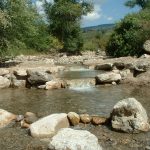 Fish Passage & Migration
Fish Passage & Migration
Our research has shown that the Teton River’s Cutthroat depend on migrating up tributary streams to spawn. For tributaries that have productive populations of native trout, restoring connected migration routes free of obstacles impediments, or entrapment, is how we improve their chances for reproductive success.
 Habitat Improvements
Habitat Improvements
Many sections of the Teton River and its tributaries have been impacted by uses and development that have led to poor water quality, erosion, and a lack of healthy habitat for fish and wildlife. We approach stream restoration as a collaborative process, using innovative bioengineering techniques to stabilize banks and channels.
 Function & Flow
Function & Flow
FTR has a number of programs and projects aimed at improving stream flows and water management, protecting floodplains, and ensuring the overall health of stream corridors. We work with stakeholders using cooperative solutions, and market-based incentives, to improve the natural function of our riparian ecosystems.
Completed Projects
Since 2001, FTR has completed a variety of projects to improve habitat, connectivity, and natural stream processes.

Seeing Results
The Teton River has increasing trout numbers, species diversity, and rebounding native trout numbers that are far beyond what fisheries biologists have seen elsewhere. Between 2003-2017, Yellowstone Cutthroat Trout densities in the Teton River increased from fourteen cutthroat per mile to 936 cutthroat per mile, in some stretches. Overall trout densities (for all species) increased as much as nine times, from 420 trout per mile to 3,867 trout per mile. The data strongly suggests that these improvements in the fishery are the result of the cumulative restoration, conservation, and stewardship efforts of FTR, landowners, and our project partners.

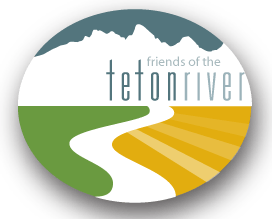

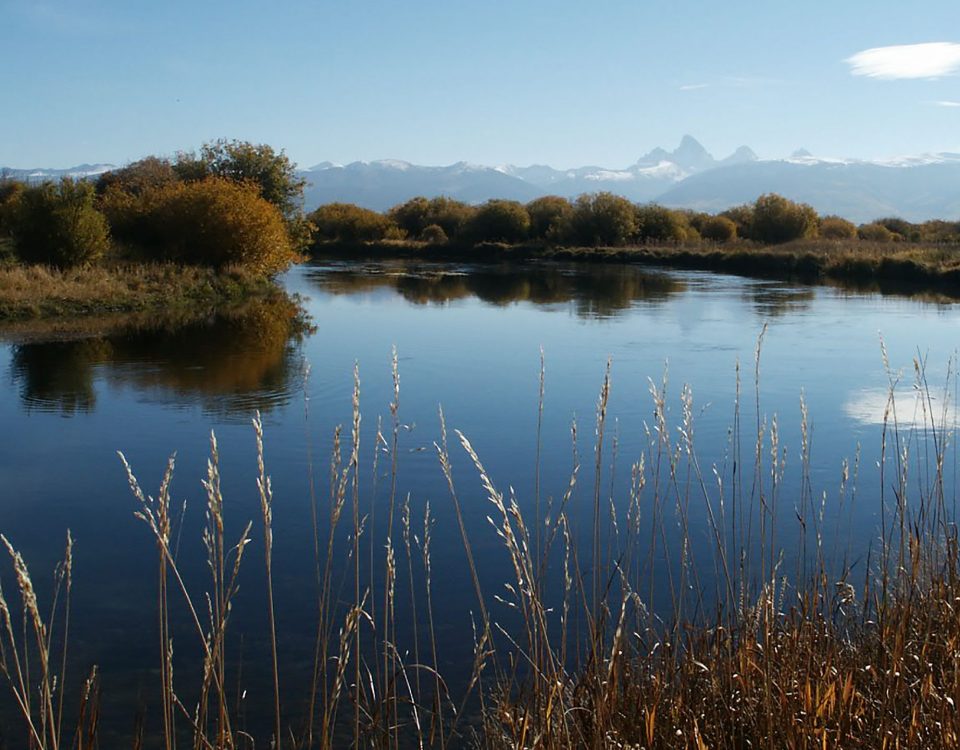


 McKenzie is the Program and Development Associate. She supports the Grants Director, Philanthropy Director, outreach efforts and program staff in the field. She aims to assist staff in meeting goals and producing high quality work in service of the Teton River Watershed. She is originally from Santa Barbara, California and grew up visiting her grandparents in Teton Valley. Her passion for the great outdoors and conservation grew when she studied Ecology and Evolutionary Biology at the University of Colorado Boulder, and she is excited to continue learning from this organization.
McKenzie is the Program and Development Associate. She supports the Grants Director, Philanthropy Director, outreach efforts and program staff in the field. She aims to assist staff in meeting goals and producing high quality work in service of the Teton River Watershed. She is originally from Santa Barbara, California and grew up visiting her grandparents in Teton Valley. Her passion for the great outdoors and conservation grew when she studied Ecology and Evolutionary Biology at the University of Colorado Boulder, and she is excited to continue learning from this organization.